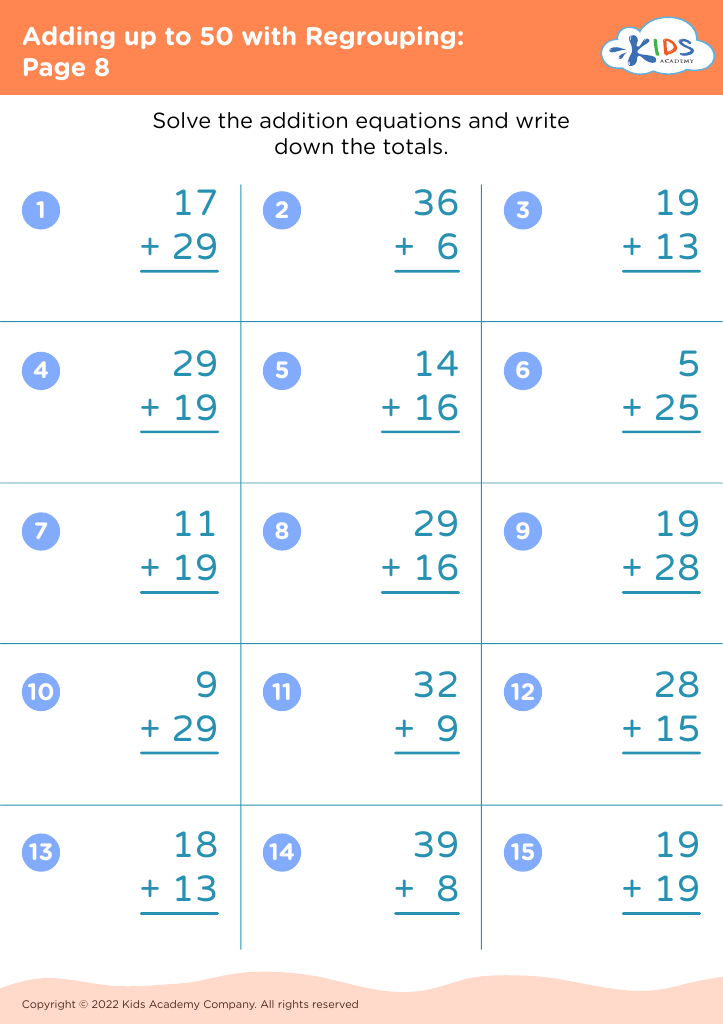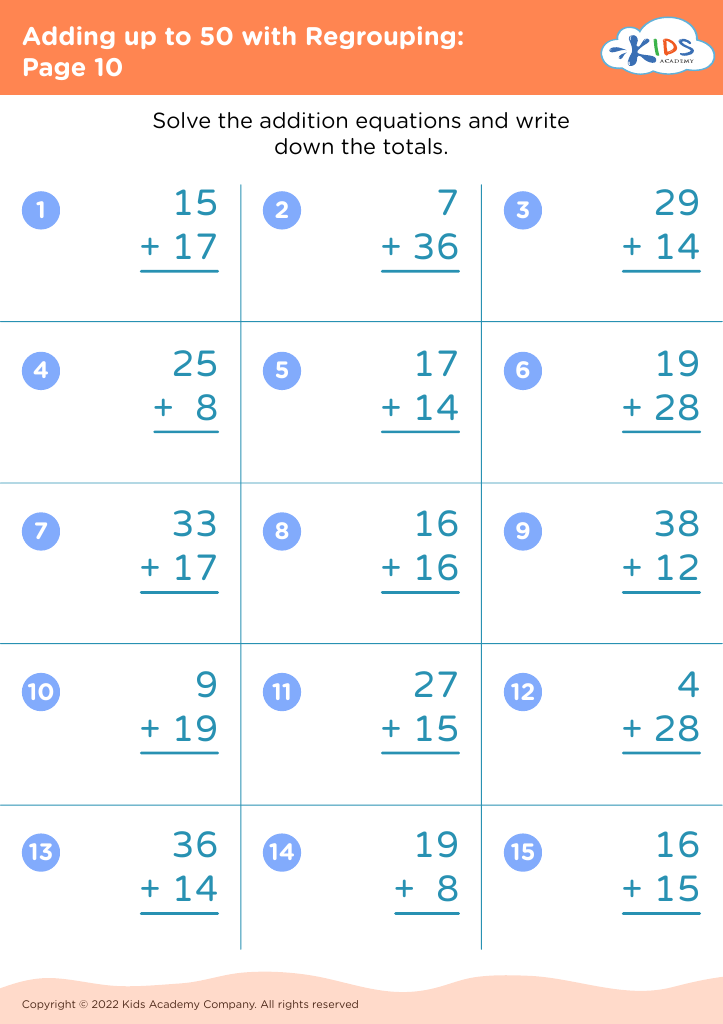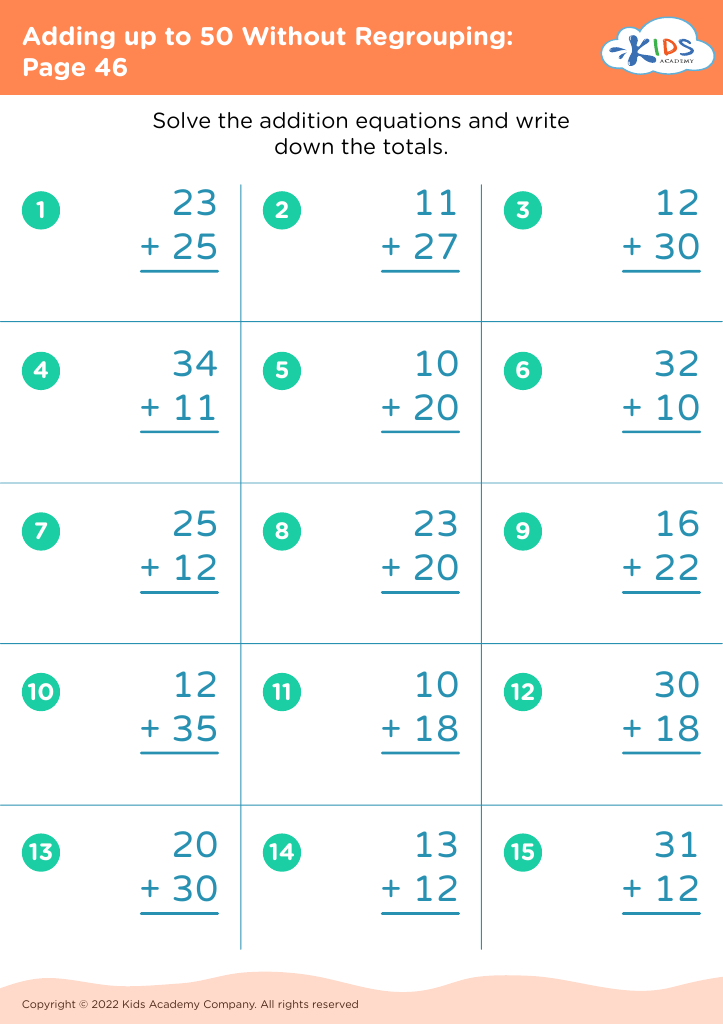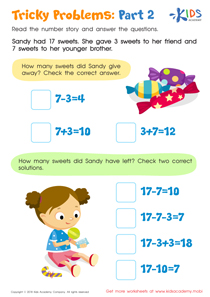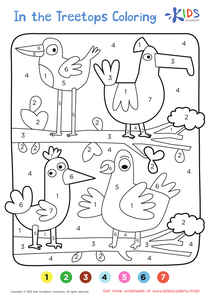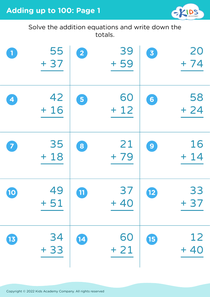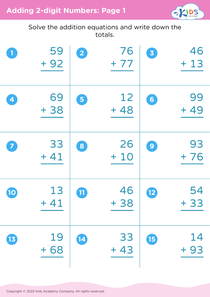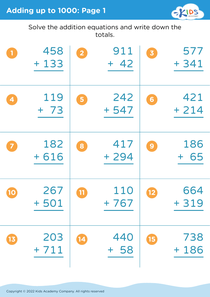Shape identification Grade 2 Adding up to 50 Worksheets
3 filtered results
-
From - To
Enhance your second graders' math skills with our Shape Identification Grade 2 Adding Up to 50 Worksheets! These engaging worksheets combine shape recognition with addition, providing a comprehensive learning experience. Designed specifically for young learners, each activity encourages creativity while reinforcing essential math concepts. Your students will enjoy identifying basic shapes like circles, squares, and triangles, all while practicing addition up to 50. Perfect for classroom use or at-home practice, these worksheets help make math fun and interactive. Watch your students gain confidence and improve their problem-solving skills as they explore the relationship between shapes and numbers. Start their learning journey today!
Shape identification and understanding geometric concepts are crucial for Grade 2 students as they set the foundation for more complex mathematical skills. At this stage, children are learning to recognize and name basic shapes like circles, squares, triangles, and rectangles, which aids their visual-spatial reasoning. This not only enhances their ability to interact with the world around them but also builds a strong mathematical vocabulary essential for future learning.
Additionally, integrating shape identification with addition activities, such as "Adding up to 50," supports their arithmetic skills in a cross-curricular manner, making learning more engaging. For example, using shapes to represent quantities can help children visualize and solve addition problems, reinforcing number sense and promoting critical thinking.
When parents and teachers emphasize these skills, they encourage children to observe, compare, and explore geometric relationships. This holistic approach nurtures a child's confidence in math and lays the groundwork for algebraic thinking. Furthermore, recognizing shapes in their environment encourages children to become critical thinkers and problem solvers, skills that extend far beyond the classroom. Therefore, parents and teachers play a vital role in supporting shape identification and its integration into broader math learning for overall cognitive development.
